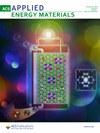白蒿提取物与食品成分在体外胃肠道消化过程中的相互作用及其对各种模型系统中多酚生物可及性的影响
IF 5.4
3区 材料科学
Q2 CHEMISTRY, PHYSICAL
引用次数: 0
摘要
植物化学物质的生物可接受性是新功能食品设计的一个重要因素。本研究测定了白艾提取物(FE)与食品配料(椰子油、蛋白粉、糙米粉、菊粉及其混合物)在体外消化后的相互作用,为开发针对老龄人口的功能性汤料提供了参考。椰子油对多酚具有保护作用,在肠道消化后显示出最高的生物可及性(62.9%)和抗氧化活性(DPPH 12.38 mg GAE/g DW,FRAP 0.88 mol Fe(ll)/g DW)。相比之下,蛋白白蛋白对多酚稳定性的负面影响最大,导致生物可及性最低(12.49%)。此外,蛋清蛋白通过多酚与蛋白质的非特异性相互作用抑制淀粉酶的活性,从而促进乳液稳定性并延缓淀粉消化,导致消化过程中释放的总还原糖(TRS)减少。它还限制了蛋白质的消化,这可能是由于多酚和蛋白质形成了复合物,从而降低了氨基酸和多酚的生物可及性。这些发现为设计功能性食品提供了有用的信息,可促进天然提取物的生物可及性和生物活性。本文章由计算机程序翻译,如有差异,请以英文原文为准。
Interactions of White Mugwort (Artemisia lactiflora Wall.) Extract with Food Ingredients during In Vitro Gastrointestinal Digestion and Their Impact on Bioaccessibility of Polyphenols in Various Model Systems
The bioaccessibility of phytochemicals is an important factor for new functional food design. The interaction of white mugwort extract (FE) and food ingredients (coconut oil, egg white albumen, brown rice powder, inulin, and mixtures thereof) was determined after in vitro digestion to inform the development of a functional soup for an aging population. Coconut oil exerted a protective effect on polyphenols, showing the highest bioaccessibility (62.9%) and antioxidant activity after intestinal digestion (DPPH 12.38 mg GAE/g DW, FRAP 0.88 mol Fe(ll)/g DW). In contrast, egg white albumen had the most significant negative effect on the polyphenol stability, resulting in the lowest bioaccessibility (12.49%). Moreover, FE promoted the emulsion stability and delayed starch digestion by inhibiting amylase activity via non-specific polyphenol–protein interactions, resulting in a decrease in the total reducing sugars (TRS) released during digestion. It also limited the protein digestion, probably due to the complex formation of polyphenols and proteins, consequently reducing the bioaccessibility of both amino acids and polyphenols. These findings provide useful information for designing functional food products that could promote the bioaccessibility and bioactivity of natural extracts.
求助全文
通过发布文献求助,成功后即可免费获取论文全文。
去求助
来源期刊

ACS Applied Energy Materials
Materials Science-Materials Chemistry
CiteScore
10.30
自引率
6.20%
发文量
1368
期刊介绍:
ACS Applied Energy Materials is an interdisciplinary journal publishing original research covering all aspects of materials, engineering, chemistry, physics and biology relevant to energy conversion and storage. The journal is devoted to reports of new and original experimental and theoretical research of an applied nature that integrate knowledge in the areas of materials, engineering, physics, bioscience, and chemistry into important energy applications.
 求助内容:
求助内容: 应助结果提醒方式:
应助结果提醒方式:


